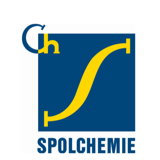
Seamless integration of the comprehensive enterprise information system microsoft dynamics 365 (prior ax) to ensure a smooth running of the manufacturing process
In 2007, SPOLCHEMIE, the Czech Association for Chemical and Metallurgical Production, was choosing a new comprehensive enterprise information system. The first choice was a solution provided by a competitor. However, issues arose during its implementation and the system ultimately failed integration tests. SPOLCHEMIE stopped the entire implementation and decided to contact Konica Minolta IT Solutions Czech which had proposed Microsoft Dynamics AX (today rebranded into Microsoft Dynamics 365 Finance and Operations) during the selection process. The new system is now successfully operating in 11 group companies and actively helping the management team to streamline managing the entire production process.
End of support for the previous system
SPOLCHEMIE, the Czech Association for Chemical and Metallurgical Production, has been manufacturing high-quality chemicals for more than 160 years. Their business has always been driven by in-company research, development and innovations. Their factory has developed inventions and patents which affects chemicals worldwide up today. The initial desire to replace the enterprise information system was the result of support for the system the company previously used being discontinued. The small, local closed system came to an end and SPOLCHEMIE began to worry that it might not be able to respond quickly enough to potential sudden changes in the law.
In addition, there were certain gaps in how the system managed continuous process manufacturing. That is why the SPOLCHEMIE management team decided to implement a new comprehensive information system that would be capable of meeting all of the company’s needs. The IT Department prepared a very detailed tender document for the selection process, describing in 60 pages everything that the new system had to be able to handle.
Numerous suppliers of enterprise solutions and their partners submitted bids in the selection process announced in 2007. Among them were small specialised providers, as well as large-scale, multi-national solutions. Only two systems reached the final stage of selection – Microsoft Dynamics AX (today rebranded into Microsoft Dynamics 365 Finance and Operations) and a competing solution. They were both able to meet all of the company’s requirements, including managing the demanding continuous process manufacturing, which involves dozens of individual steps in certain areas.
Smaller solutions were disqualified from the final selection because of challenging custom development requirements, with an uncertain outcome and a high price demanded in order to cover process manufacturing, as well as some other areas. Ultimately, this made Dynamics AX surprisingly cheaper than the small, local solutions in certain cases. However, SPOLCHEMIE selected the alternative solution offered by one of our competitors, as two of the group companies had prior experience with this solution.

The first implementation failed the integration tests
But while implementing the system, more and more problems became apparent. The price of the customisation required kept rising, everything was taking way too long, exchanging data between some of the modules did not work the way it was supposed to and, above all, maintaining and developing the system proved problematic. The IT Department wanted to be able to make minor system adjustments and expansions independently, but despite taking part in several training sessions, it was not possible to gain the required knowledge.
When the system failed integration tests prior to the final roll-out, SPOLCHEMIE stopped the entire implementation and decided to contact Konica Minolta IT Solutions Czech which had proposed Dynamics AX during the selection process. This system also met all the company’s requirements, while its openness and object model allowed for easy maintenance and additional development. Prior to kicking off the actual implementation, SPOLCHEMIE requested several reference visits to other Dynamics AX users. The management team was primarily interested in the users’ real experience and in the actual functioning of what had only worked on paper for the competing solution. Once it was clear that Dynamics AX really would be able to meet all of the company’s requirements, SPOLCHEMIE was ready to start the implementation.
No negative impact on the production process allowed
At first, a standard implementation cycle, beginning with an analysis and ending with final testing and training took place. Prior to going live, the management team decided to stop the project and expand it to cover the entire group structure that had been emerging since 2009. As a result, Konica Minolta IT Solutions Czech carried out a short feasibility study confirming that Dynamics AX could handle the required group functionalities, but that it would be necessary to switch to the 2009 version. The existing solution was upgraded to the new version and first deployed in the newly emerging service company, before being rolled out to other, smaller companies in the group. These smaller companies were used to debug all of the processes and procedures that SPOLCHEMIE wished to roll out to all parts of the group, which were expected to gradually switch to Dynamics AX. The first implementation phase was completed in June 2010. The second phase, switching larger SPOLCHEMIE companies to Dynamics AX, was then supposed to be completed by April 2011. The key requirement for the implementation was that the entire process would not have any negative impact on the production in progress and related operations. This requirement was met without any problems.
The system had been implemented at a total of seven companies that are part of SPOLCHEMIE and its sister company STZ by 1 April 2011, when it went live. In 2014, the existing solution was also deployed without much difficulty in a German manufacturing company, including accounting in accordance with German standards.

Better control over production and inventory
Deploying Dynamics AX across the group of companies has had a number of benefits. The most important ones were in the challenging area of process manufacturing. For example, in the past, the company did not have up-to-date information about the current stock level of production raw materials. The materials are usually not picked up piece-by-piece, but rather as a group. This also caused issues valuing such stock when, for example, a third of the xylene tank may be purchased at price x and the remaining two thirds at price y. All stock is currently valued using the FIFO method, whereby the system continuously calculates the total cost of the output products based on the materials consumed. For raw materials purchased abroad, the system takes into account the current exchange rate and fluctuations in the foreign exchange market. This allows SPOLCHEMIE to continuously adjust the prices of its products, so as to keep the required margin and minimise the risk of selling below production cost. Thanks to the detailed monitoring of all steps in the individual production processes, Dynamics AX gives the company management team the tools necessary, not only to improve production capacity planning, but also to minimise the risk of production coming to a halt due to the absence of any raw materials.
The new options offered by Dynamics AX also permitted switching some types of production from monthly to weekly production planning, allowing the company to further optimise stock management and consequently its cash flow, as well as to utilise individual production capacities. Dynamics AX managed not only to meet all of the initial requirements of the company, but also to open up new possibilities in production management for the company management team.
Advantages
Continuous adjustment of product prices and minimising the risk of selling below production cost because: - Always up-to-date information about the current stock level of production raw materials
- Continuous calculation of total cost of the output products based on the materials consumed
- Current exchange rate and fluctuations in the foreign exchange market for raw materials purchased abroad are considered
Detailed monitoring of all steps in the individual production processes lead to: - Minimising the risk of production coming to a halt due to the absence of any raw materials
- Improvement of the production capacity planning
Switching some types of production from monthly to weekly production planning lead to: - Optimising stock management
- Optimising cash flow
- Utilising individual production capacities
Challenge
- Previous enterprise information system was end of support and needed to be replaced
- Quick response to potential sudden law changes required
- Smooth management of the demanding continuous process manufacturing, which involves dozens of individual steps in certain areas, required
Solution
- Implementation of Microsoft Dynamics AX (today rebranded into Microsoft Dynamics 365 Finance and Operations) after the first competitor solution has been failed the integration tests
